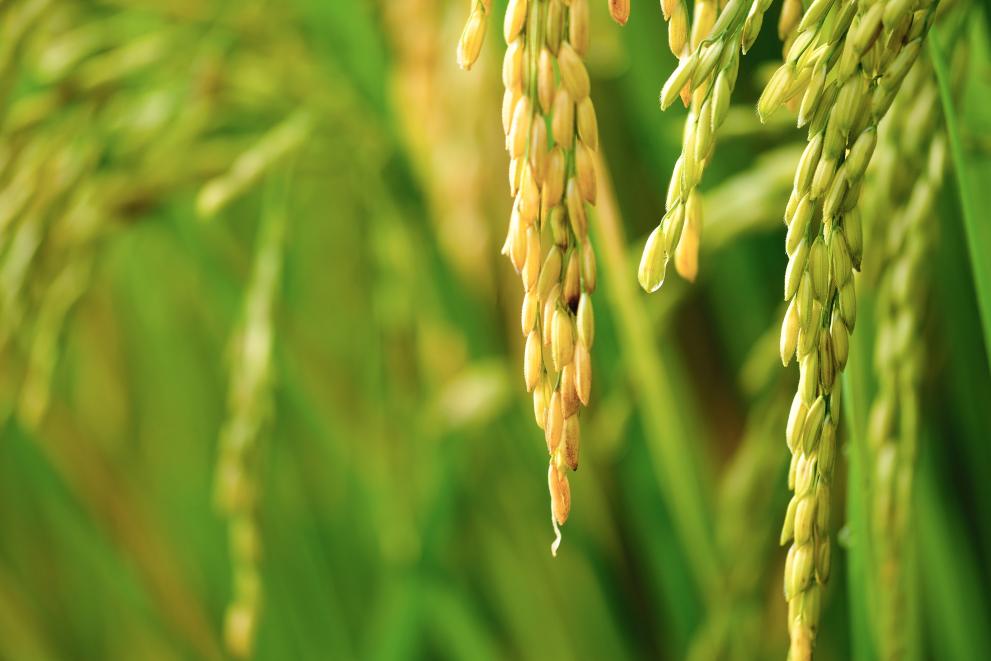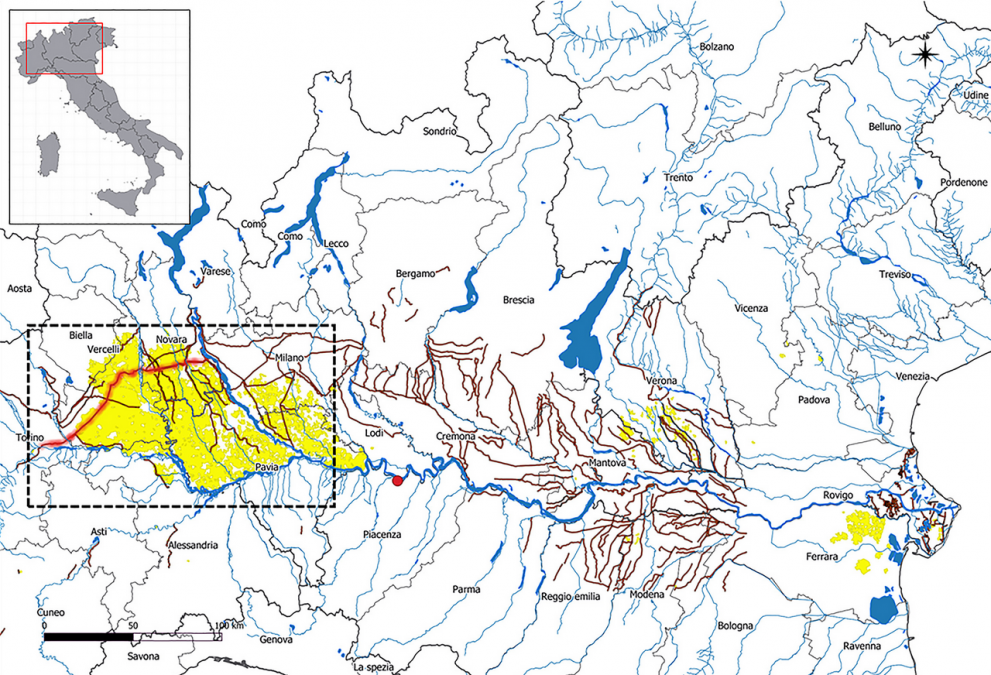
A recent JRC-led article finds that sustainable rice cultivation in the Earth's middle latitudes can be achieved by balancing traditional and dry‐seeding farming methods.
Rice production in Northern Italy
The article focuses on rice cultivation in the Po Valley of Northern Italy, the largest producer of European rice and a good example for the typical conditions found in the rice growing areas of middle latitudes.
As rice needs both sunny and wet conditions during the growing season, crop yields are strongly affected by weather and water availability. Greater irrigation is needed during sunny and dry seasons, while cold and wet seasons can lead to reduced photosynthesis, disease and grain sterility.
The Po Valley region is particularly suited to growing rice given its sunny summers and water availability from spring precipitation and runoff from the surrounding mountain ranges.

However, this situation is changing.
Effect of agricultural management practices and a warming climate on water availability
The authors found a significant drop in the amount of seasonal surface water available in this area since 2000, as evidenced by the biggest change in surface water occurrence in Europe ever detected by the JRC's Global Surface Water Explorer.
This drop in water availability coincided with a shift from the traditional flooded paddy fields to dry seeding and postponed flooding - a new management practice that aimed to conserve water resources and save on greenhouse gas emissions.
Unfortunately, a concurrent rapid shift in the regional climate towards sunnier and drier weather conditions meant that even greater amounts of water were required during the growing season.
The upshot of this led to the largest change in European surface water caused by man, and what originally appeared to be a wise adaptation strategy was found to no longer be sustainable.

The authors conclude that, in the context of near‐term climate change, sustainable rice cultivation in the middle latitudes can best be achieved by balancing traditional water-seeding and dry-seeding paddy management practices.
Further information
- Adaptation and sustainability of water management for rice agriculture in temperate regions: The Italian case‐study
- Global Surface Water Explorer
Related Content
Details
- Publication date
- 12 August 2019
